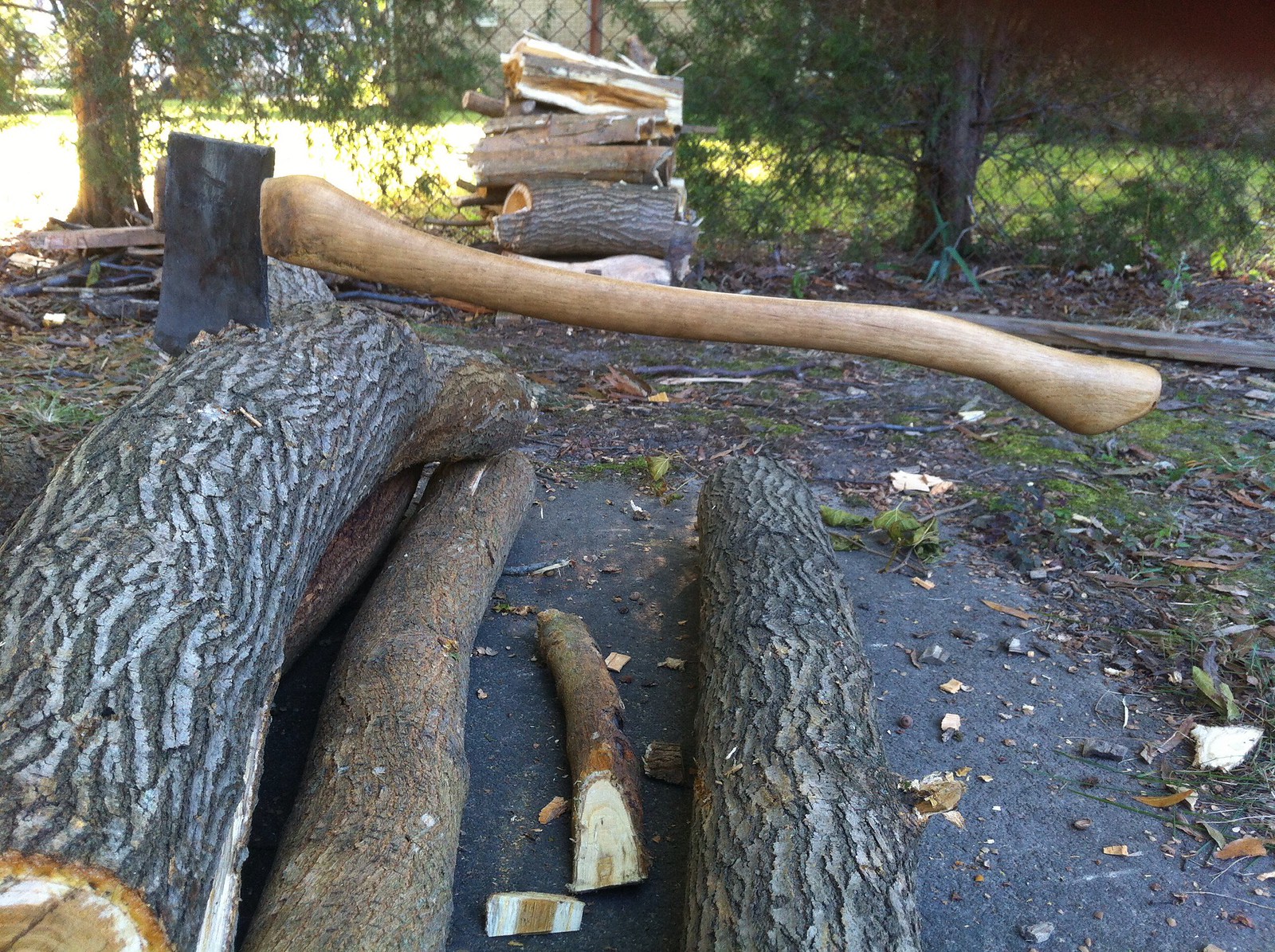Since the above comment seems to be what sparked this thread I figured I would respond to it here. I wanted to clarify that axes should not have a 40° bevel as stated above. I did not want to derail the other thread any further, but I'm happy to clear up the misconceptions about our hillbilly tools in this thread ;-)
http://www.fs.fed.us/t-d/pubs/htmlpubs/htm08232327
Per the US Forest Service on putting an edge bevel on an axe. If you look towards the bottom of the page you will see an example of a bit gauge. Since axes are not sharpened with a guided system. Honestly Ive never used a guided system on any of my edged tools. Looking at the bit gauge it is clear that an axe can have a variety of bit thicknesses or angles depending on how you want to look at it. Some being more acute than 20°
The page also states Individual preferences for the bevel angle vary. On double-bit axes, a more acute angle, about 20 degrees, may be preferred on one of the bits with a blunter angle, about 40 degrees, on the other bit. For those not familiar with the concept a double bit felling axe often had two different edges. One was fine and well maintained for efficient chopping, the other blunt and used for work near rocks or dirt where the edge was at higher risk of damage. This was to preserve your good edge for the brunt of the work. This statement should make it clear that an axe should indeed be sharp by anyone's standards. I think a lot of the confusion comes from the fact that with an axe the angle of the edge generally continues on throughout the cheeks all the way to the back of the pole. With a knife you typically have two separate bevels one to form the edge called the secondary or relief bevel and the primary which does most of the initial thinning from the spin or some point below the spine down to the start of the secondary. This is called the primary bevel. It may help to look at it this way an axe is like a knife that only has one bevel the primary and no flats, so the angle of the edge continues until the pole or spine is reached. The edge angle can be the same even if the tool appears to be blunt due to the lack of overall thinness of the tool.
Now I already got into why an axe is made the way it is in my last post. To summarize basically an axe is designed to simultaneously bit deeply into wood and force it apart with a wedging action. This allows the axe to cut deep, not become wedged or stuck in the wood, and clear the wood from the cut efficiently. Because of this an axe for pure chopping is more efficient. Of course someone could always chime in pointing out that a saw can be much more efficient than a knife or axe, but if we are all being honest we use the tools we are passionate about not necessarily the most efficient.
In a way though Gaston is excused, because he has some valid points about edge geometry (thickness of the primary grind just behind the secondary grind or edge), and to a lesser extent secondary or relief bevel angles. A lot of modern knives get these attributes wrong on their knives making for a poorly performing tool. But then again that discussion likely belongs in a different sub forum on this site.

